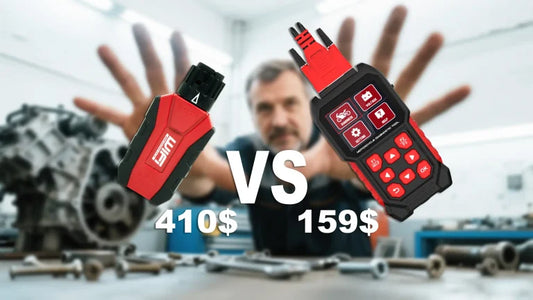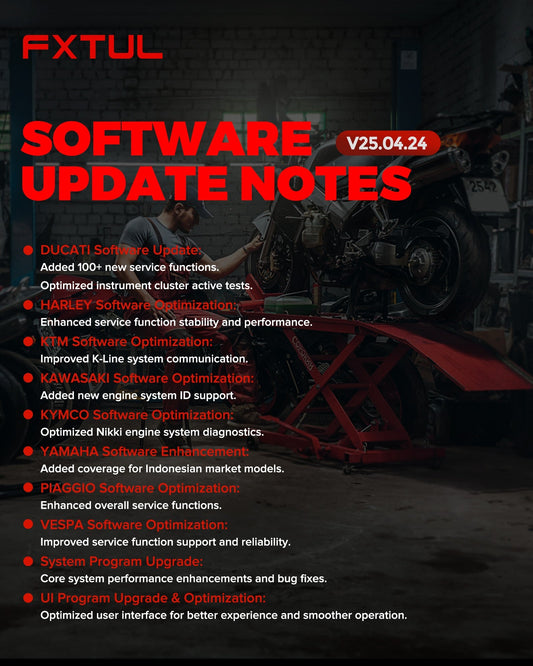As motorcycle enthusiasts, we all seek the thrill of responsive throttle response and smooth acceleration. But have you ever felt that your beloved motorcycle is gradually losing its “appetite”—idling rough, lacking power when accelerating, and experiencing unexplained increases in fuel consumption? If the answer is yes, then the problem is likely due to a key component: the fuel injector. So, do motorcycle fuel injectors really need to be cleaned?
I. Fuel Injector: The Engine's “Precision Throat”
First, we need to understand what a fuel injector does. Its primary function is to atomize fuel into extremely fine particles under precise instructions from the electronic control unit (ECU), then spray them uniformly into the intake manifold or cylinder (depending on the type of fuel injection system).
A healthy fuel injector ensures excellent fuel atomization, allowing it to mix thoroughly with air, thereby achieving efficient and complete combustion. This directly impacts the engine's power output, fuel efficiency, and emissions cleanliness.
In essence, its condition directly determines the engine's “appetite” and “digestive capacity.”
II. Why is cleaning necessary? The culprit is “carbon buildup.”
The answer is: It is absolutely necessary! Regular cleaning of the fuel injectors is an important part of motorcycle maintenance.
The fundamental cause lies in the gasoline itself. Even the highest-quality gasoline contains impurities such as gum and wax, and during storage and transportation, it may also become contaminated with minute dust particles and moisture. Under the high-temperature, high-pressure conditions of the engine, these substances gradually accumulate and carbonize inside the precision nozzles and at the tips of the injectors, forming what we commonly refer to as carbon deposits.
What issues do carbon deposits cause?
1. Inaccurate fuel injection: Carbon deposits can partially block the nozzle holes, reducing the actual fuel injection volume and preventing the ECU from accurately controlling the air-fuel ratio.
2. Poor atomization: Nozzle holes affected by carbon deposits cannot properly atomize the fuel, resulting in fuel droplets that fail to mix adequately with air.
3. Poor sealing: The needle valve of the fuel injector may also be stuck by carbon deposits, causing it to close improperly and leak fuel during non-injection periods.
Ultimately, these technical issues will manifest in your riding experience:
• Unstable idle, vibration, or even stalling: The fuel-air mixture is too lean or fuel injection is uneven across cylinders.
• Weak acceleration and delayed throttle response: Insufficient fuel supply and low combustion efficiency.
• Significant increase in fuel consumption: To compensate for insufficient power, you may unconsciously twist the throttle deeper, or fuel is wasted due to dripping.
• Difficulty starting: Especially when starting a cold engine, more fuel is required but not adequately supplied.
• Excessive emissions, failed annual inspection: Incomplete combustion leads to increased levels of harmful substances in exhaust gases.
III. When should you clean it? Understanding your car's “signals”
Generally, it is recommended to inspect or clean the fuel injectors every 20,000 to 30,000 kilometers. However, this is not set in stone. If you frequently encounter traffic jams (low-speed driving can cause carbon buildup) or regularly use fuel from unknown sources, this interval should be shortened.
More importantly, learn to recognize the symptoms mentioned earlier. If you experience idling vibrations or poor acceleration, and after ruling out common issues like spark plugs or air filters, you should strongly suspect that the fuel injectors need cleaning.
IV. How to clean? Two mainstream methods
There are two main methods for cleaning fuel injectors:
1. Non-disassembly cleaning (drip bottle)
•Method: Connect a special fuel system cleaner to the fuel line and, while the engine is running, allow the cleaner to replace the fuel and flow through and clean the fuel injectors, intake valves, and other components.
• Advantages: Convenient and quick, no disassembly required, relatively inexpensive, and can clean part of the intake manifold simultaneously.
• Disadvantages: May not be thorough enough for severe carbon buildup or long-term blockages.
• Applicable: Ideal for regular maintenance and cleaning of mild carbon buildup.
2. Disassembly and cleaning (ultrasonic cleaning)
• Method: Completely remove the fuel injector assembly from the engine and use a professional ultrasonic cleaner to thoroughly clean the interior and exterior of the fuel injector using high-frequency vibrations and specialized chemical cleaning solutions. After cleaning, testing must be conducted on a test bench to observe whether the fuel spray pattern, atomization effect, and sealing performance have been restored.
• Advantages: Thorough cleaning with the best results, and the before-and-after comparison and performance test data can be clearly observed.
• Disadvantages: Complex process, time-consuming, high cost, and requires specialized equipment and technicians to operate.
• Applicable for: Severe symptoms where non-disassembly cleaning is ineffective, or during deep maintenance.
Motorcycle fuel injectors may be small, but they are crucial.
Rather than waiting for problems to arise before repairing them, it is better to include fuel injector cleaning in your regular maintenance schedule. When the throttle response becomes sharp again and the engine sound returns to its crisp tone, you will be grateful for your attention to detail.




